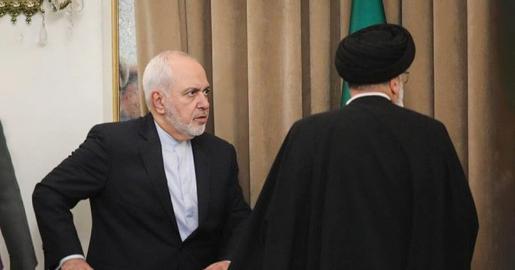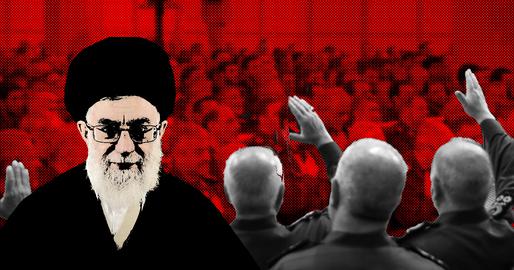Reports that Ayatollah Khamenei was recovering from prostate surgery in a Tehran hospital hit the headlines on Monday. But it was not just the news of the leader’s unexpected ailment that struck a chord. As the Supreme Leader gave a rare statement to Iranian television, his office published a series of photographs showing him in his hospital bed, hooked up to an oxygen machine and appearing frail and vulnerable. Soon they appeared everywhere, from Iranian state media to Twitter.
It’s an unprecedented move from Khamenei’s media team, which carefully manages his public image, customarily presenting him in robust health, cheerfully administering wise advice and demonstrating unwavering leadership over the Islamic Republic.
So why did his office decide to break with tradition, giving an apparently true account of the Supreme Leader’s health?
1. Image Control is the Key to Success
Rumors about the Supreme Leader’s health are nothing new: in 2009, the Guardian reported that Khamenei might be suffering from cancer, and media outlets have speculated on a range of ailments over the years. Yesterday’s response reveals a modern media outfit, ready to combat rumors and manage how the world absorbs news about Iran and its leaders.
But Tehran-based journalist Isa Saharkhiz believes that regime-led efforts to control the story are misguided. “Now it’s hard to find anybody who won’t refer to cancer as the reason for the surgery,” he said, precisely the opposite response to the one the office wanted to manufacture.
Saharkhiz also points out that a simple test can detect whether a patient is suffering from cancer, so a hospital visit—publicized or not—was probably not even necessary.
To speculate that Khamenei has cancer is hasty, according to Dr Kavian Sadeghzade Milani, who practices medicine in the US. There is no strong indication or scientific evidence that such is the case, he told IranWire. The most realistic guess, he says, would be that the Supreme Leader is suffering from hyperplasia, or an enlargement of his prostate. To have a clear understanding of his ailment, we need more time.
The office of the Supreme Leader has always taken its image management role seriously: Though Supreme Leader and founder of the republic Ayatollah Khomeini suffered cardiac arrest in 1986, when the Iran-Iraq war was in full swing, details about his condition were only revealed in a memoir published by former president Hashemi Rafsanjani in 2008.
There were also rumors circulating around Ayatollah Khamenei’s gall bladder operation in 1991, only two years after he’d taken over from Khomeini. “The regime was trying to curb the news so as to prevent the impression that the political system had weakened at the top,” said Morteza Kazemian, a Paris-based Iranian affairs analyst and journalist in an interview with IranWire. “But this not the situation now. The Islamic Republic believes itself to be stable. With the brutal and bloody suppression of popular protests after the 2009 election and with the 2013 election and the victory of a candidate [Rouhani] who was also supported by the reformists, Ayatollah Khamenei and his power center have no reason to be concerned.”
But in a rare comment earlier this year, one senior member of the Assembly of Experts, the body charged with electing, supervising and dismissing the Supreme Leader, said that life after Khamenei had to be considered. And any speculation about who his successor might be—as with the Khomeinist period, where expectations did nothing to calm the growing animosity between Khomeini and his deputy— could lead to drastic political reverberations.
2. President Rouhani and the Supreme Leader are Allies
For some, yesterday’s move has also been seen as an opportunity to recast Iran’s political landscape in the public mind. Recent rifts between President Rouhani and the Supreme Leader have not gone unnoticed by the media, so it was fitting that yesterday’s official photos show a respectful, humble Rouhani at the leader’s bedside. Khamenei was reported to have told Rouhani, his first visitor, who returned to Tehran from meetings in Mashhad before traveling abroad, that he should carry on with his work and did not need to worry about him. Hashemi Rafsanjani, who currently chairs the influential Expediency Discernment Council, was second in the waiting room, accompanied by three of Ayatollah Ruhollah Khomenei’s grandchildren. These visits from members of the country’s more moderate camp will have no doubt angered hardline politicians.
3. Full control over the media is no longer possible
Iran’s leadership no longer has the monopoly on information it once did. “Now, with new communication technology, Iranians have access to numerous sources of information,” says analyst Kazemian. “More than 75 percent of Iranians have access to mobile phones, access to the internet is widespread, and let us not forget radio and TV networks outside Iran, which have a considerable audience inside the country. Keeping surgery a secret was next to impossible. For a regime that lacks democratic legitimacy, every impression of instability can lead to unwelcome consequences”. Those in power will want to prevent this, especially given the fragile situation in the region and the ongoing nuclear negotiations.
4. Khamenei cares deeply for the Iranian public
In his short television interview, Khamenei reassured the Iranian public that there was no cause for concern but that, nonetheless, prayers for him would be welcome. His website referred to the medical procedure as “routine” and quoted the head of his medical team, Dr Alireza Marandi. The ayatollah, he said, had asked that the surgery to be scheduled early in the morning so as not to upset the Iranian public, or those working to promote the country’s values.
5. Iran’s national health system is top notch
Khamenei’s official website reported that Khamenei was being treated in a public hospital, presenting the leader as a plan-living man whose medical care resembles that of any other ordinary Iranian citizen. At the same time, it gave the country’s public healthcare system, which has suffered under sanctions, a much-needed endorsement.
In recent years, there have been widespread reports that Ayatollah Khamanei’s daughter-in-law has spent an exorbitant amount of money at fertility clinics in London, an image that the Khamenei publicity machine will be keen to push out of the public mind, neatly supplanting it with a picture of the benign leader enduring physical discomfort with calm and strength.
Whether it feels it must challenge the growing tide of speculation or it has recognized a unique opportunity to exploit public sentiment, it’s clear that the office of Supreme Leader has changed tack. Will it pull it off?
visit the accountability section
In this section of Iran Wire, you can contact the officials and launch your campaign for various problems

























comments